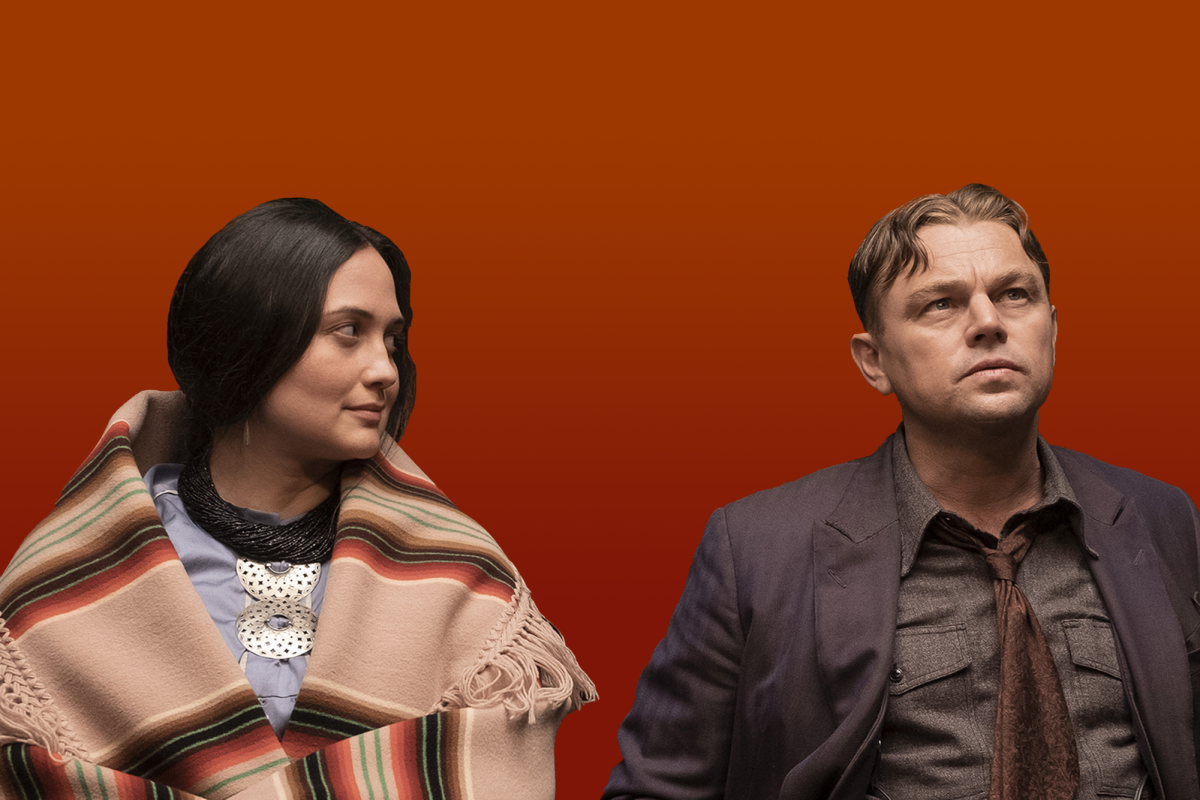This article contains spoilers.
Pairing masterful story building with superb acting performances, director Martin Scorcese proved his continued industry dominance with “Killers of the Flower Moon,” his 27th feature film.
Released in theaters on Oct. 20, the film almost immediately jumped into conversations about the Academy Awards’ Best Picture. The legendary filmmaker spent six years on the creation of the project, and it was evident.
Set in post-World War I Oklahoma, where vast oil deposits made members of the Osage Nation some of the richest people in the United States, a deeply distressing series of power plays (including systematic marriages and murders) ensue.
“Killers of the Flower Moon” lures the audience in with optimism. The first act feels like the Scorsese movies that audiences have come to know — hard and quick cuts, rocking music and morally questionable but intriguing characters.
A shot of Ernest Burkhart, portrayed by Scorsese starboy Leonardo DiCaprio, exiting a train and traversing the bustling Fairfax, Oklahoma, station makes for a breathtaking opener. The shot echoes the first shot in “The Wolf of Wall Street,” where DiCaprio takes a stroll through the insanity of a financial brokerage.
The film also stars the legendary Robert De Niro as Ernest’s uncle William Hale and newcomer Lily Gladstone as Mollie Burkhart, a wealthy Osage woman and Ernest’s eventual wife.
Hale is a trusted and almost omnipotent figure in Fairfax. De Niro delivers an expectedly polished performance with an initial sincerity that shifts into a manifestation of scheming evil.
Gladstone is exceptional as Mollie, taking control of many scenes with her facial expressions alone. She commands unwavering attention and brings gravity to every scene she’s in. The bright lights are on when acting with DiCaprio, and she goes toe-to-toe with him in every scene.
After the vibrant introduction of the first act, the film takes a calculated and dark turn. Over the second and third acts, Hale and Ernest orchestrate a series of brutal, calculated and slow murders of Osage people.
Mollie is the only member of her family left. Ernest has murdered her sisters and is in the process of poisoning her. Mollie’s rapid decline in health and the deterioration of Ernest’s morality mirror each other.
While Hale and Ernest go on trial for their crimes, little justice is delivered. Scorsese highlights the trend throughout United States history of white men like Hale continuously escaping the repercussions of heinous acts.
“Killers of the Flower Moon” is a harrowing and heavy film. It is a story of how evil takes hold, told from the perspective of the murderous tyrants who carried out such deeds.
Scorsese introduces Hale and Ernest as possible protagonists, just to destroy the idea entirely. DiCaprio convincingly and skillfully portrays Ernest like a fool caught in the middle of tragedy, but really he is far from neutral. He’s an instrument of genocide.
This film feels like a commentary, if not a rejection, of Scorsese’s previous portrayal of violence and moral decay. There is not a whisper of the ethical depravity of Henry Hill from “Goodfellas” here. Hill, while a violent thief, was undoubtedly meant to be cool. He wears clean suits, pistol whips bad guys and has legendary rock songs to accompany his actions.
“Killers of the Flower Moon” has none of the coolness of “Goodfellas.” As a part of Scorsese’s complete filmography, it implores a critical examination of violence, greed and morally corrupt characters. Are some of these characters deserving of nuance, or are they all devils, some with more power than others?
“Killers of the Flower Moon” vouches for the latter answer. It is a searingly painful, artfully crafted masterpiece.
Email: jacksonweier2026@u.northwestern.edu
Twitter: @JacksonWeier
Related Stories:
— Lights, camera, action: RTVF students take film to Prague
—In light of strikes, A&O announces it will not host fall speaker event
—Reel Thoughts: ‘Saturday Night Live’ marks its decline with boring season premiere







